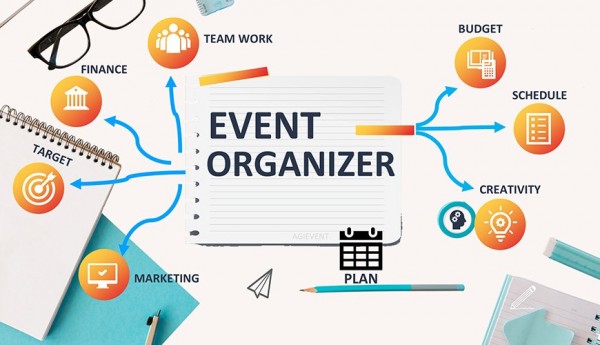Town Hall Meeting: An Effective Communication Platform for Building Collaboration

In the modern era where communication is the key to organizational success, town hall meetings have emerged as one of the effective methods to build transparent and inclusive relationships between leaders and members of the organization. This term refers to an open meeting involving all members of a team or community to discuss important issues, formulate solutions, and convey strategic information directly.
What is a Town Hall Meeting?
A town hall meeting is a two-way communication forum that is usually led by an organization leader, such as a CEO, manager, or community leader. In this meeting, participants are invited to actively participate by providing input, asking questions, or sharing views on the topic being discussed. This concept originally came from the democratic tradition in the United States, where villagers gathered in town halls to discuss public affairs.
Today, town hall meetings have been adopted by various organizations, both large companies and startups, to create a more collaborative and transparent work environment. These meetings can be held face-to-face or virtually, depending on the needs and situation.

Benefits and Functions of Town Hall Meeting
Town hall meetings have various important functions that support the sustainability and development of the organization. This meeting format is designed to facilitate two-way communication between leaders and team members, thus creating a more transparent, collaborative, and inclusive work environment. Here are some of the main functions of a town hall meeting:
1. Increase Organizational Transparency
One of the primary functions of a town hall meeting is to increase transparency within an organization. Leaders can use this forum to convey strategic information, such as the company's vision, long-term goals, performance reports, or challenges faced. By sharing information openly, team members will feel more trusted and involved in the decision-making process.
Example:
A CEO might use a town hall meeting to explain the rationale behind a major decision, such as a company reorganization or a new product launch. This helps eliminate speculation or uncertainty among employees.
2. Provide Space for Feedback
Town hall meetings provide an opportunity for team members to voice their opinions, input, or concerns directly to management. It is an ideal platform to hear voices from below, which are often not represented in top-level discussions.
The benefits:
- Helps management understand employee perspectives on certain issues.
- Identify areas that need improvement or optimization within the organization.
Example:
Employees can use the Q&A session to ask about new policies they don't fully understand or provide suggestions for improving work efficiency.
3. Strengthening Relationships Between Teams
This meeting also serves as a means to strengthen relationships between team members and with leaders. By interacting directly, mutual trust and solidarity can grow stronger. In addition, employees will feel that they are an important part of the organization.
Positive impact:
- Increase employee loyalty to the company.
- Creating a more inclusive and collaborative work culture.
Example:
Leaders can use this moment to appreciate employee contributions or share inspiring stories that motivate the team.
4. Aligning Organizational Goals
This forum allows leaders to align individual goals with organizational goals. By explaining company priorities and strategies, employees can understand how their roles contribute to achieving shared goals.
Profit:
- Help employees see the big picture of their work.
- Ensuring everyone is aligned with the company's values and vision.
Example:
Managers can explain how individual projects support the company's mission to achieve annual growth.
5. Solving Problems Collaboratively
Town hall meetings are an ideal place to identify and solve problems collaboratively. By involving all parties, the resulting solutions tend to be more creative, relevant, and effective.
Steps:
- Identifying problems faced by a team or organization.
- Invite input from multiple perspectives.
- Formulate joint solutions that can be implemented.
Example:
If there is a decline in productivity, employees can provide insight into the obstacles they are facing, while management can provide guidance on how to overcome them.
6. Increase Motivation and Work Spirit
This meeting can be used to give appreciation to employees for their achievements, both individually and as a team. Genuine appreciation can increase motivation and work spirit, and create a positive atmosphere in the workplace.
How to Do It:
- Giving awards to high-achieving employees.
- Share success stories from a particular project or initiative.
Example:
A leader might thank a team that successfully completed an important project on time, and explain the positive impact it had on the company.
7. Communicate Change Effectively
When an organization undergoes major changes, such as restructuring, acquisitions, or policy changes, town hall meetings are an effective tool for communicating those changes. Open discussions help reduce fear or resistance to change.
Good Approach:
- Explain the reasons behind the change.
- Listening to employee concerns and providing clarification.
Example:
If a company decides to move to a hybrid work model, leaders can explain the benefits and answer employee questions about its implementation.
8. Encourage Innovation and New Ideas
By involving the entire team in the discussion, town hall meetings can be a place to explore new and innovative ideas. Employees often have unique perspectives that can inspire creative solutions to business challenges.
Strategy:
- Encourage employees to share ideas without fear of being wrong.
- Rewarding high-value ideas.
Example:
An employee might suggest a new way to improve operational efficiency, which is then adopted by the company.
9. Strengthening Organizational Culture
Town hall meetings also serve to reinforce the values and culture of the organization. Leaders can use this opportunity to demonstrate their commitment to the principles the company embraces, such as integrity, innovation, or sustainability.
How to Do:
- Share stories or real examples of how these values are manifested in everyday life.
- Inviting employees to participate in building a positive culture.
Example:
Leaders can talk about the importance of sustainability and how each department can contribute to this goal.
10. Improve Responsive Leadership
By listening directly to employees, leaders can become more responsive to the needs and aspirations of their team. This helps create a more adaptive and people-oriented leadership style.
The result:
- Leaders can make wiser decisions.
- Employees feel heard and appreciated.
Example:
If many employees complain about excessive workload, the leader can immediately evaluate the distribution of tasks and make adjustments.
📚 See Other Articles → Steps to Prepare an Event
How to Host a Successful Town Hall Meeting
To ensure that the town hall meeting runs smoothly and effectively, there are several steps to consider:
-
Set a Clear Agenda
Before the meeting begins, make sure the agenda is well prepared. Focus on important topics that are relevant to the current state of the organization. Avoid discussions that are too general to keep the discussion productive. -
Involve Everyone
Make sure that all team members have the opportunity to participate. If the meeting is virtual, use a platform that allows for interaction, such as a Q&A or polling feature. -
Provide Space for Feedback
In addition to delivering information, allow enough time for participants to provide feedback or ask questions. This is the essence of a town hall meeting—listening to the voices from the ground up. -
Manage Time Well
Meetings that are too long can make participants lose focus. Limit the length of the meeting according to needs, and prioritize the most urgent topics. -
Evaluate Meeting Results
After the meeting is over, conduct an evaluation to determine whether the objectives have been achieved. Document the results of the discussion and any follow-up actions that need to be taken.
📚 See Other Articles → Tips for Choosing the Right Event Organizer
Challenges in Town Hall Meeting
While town hall meetings have many benefits, such as increasing transparency, strengthening relationships between leaders and employees, and encouraging active participation, this meeting format also faces a number of challenges. These challenges can affect the effectiveness of the meeting if not managed properly. Here are some of the main challenges that often arise in town hall meetings, along with how to overcome them:
1. Lack of Employee Participation
One of the biggest challenges in town hall meetings is a lack of employee participation. Some employees may be reluctant to speak up in public, fear of saying the wrong thing, or feel that their input will not be heard. Ways to overcome this challenge include creating a comfortable and supportive atmosphere, using anonymous methods to ask questions or provide feedback, and giving recognition to employees who participate.
2. Unfocused or Protracted Discussions
In open forums such as town hall meetings, discussions have the potential to become unfocused or protracted if not managed well. Topics may drift to less relevant issues, wasting valuable time. To avoid this, set a clear agenda, limit the time for each topic, and use a firm moderator to keep the discussion focused.
3. Lack of Preparation from the Leader or Moderator
If the leader or moderator does not prepare the meeting well, the results can be less than optimal. The information delivered may be irrelevant, unclear, or not meet the needs of the employees. Make sure the leader has prepared relevant materials, conduct a briefing before the meeting, and use data or concrete examples to support the points made.
4. Domination by a handful of people
In some cases, a handful of people may dominate the discussion, while others tend to remain silent. This can make minority voices unheard and reduce the inclusiveness of the meeting. Limit speaking time for each participant, use rotation techniques to give everyone a chance, and the moderator can actively invite views from those who have not spoken.
5. Technical Issues (For Virtual Meetings)
If your town hall meeting is virtual, technical issues like poor internet connection, unclear audio, or an unstable platform can disrupt the smooth running of the meeting. Test the platform before the meeting begins, provide a backup channel in case of technical issues, and record the meeting for employees who are having technical difficulties to access later.
6. Resistance or Distrust from Employees
Some employees may be skeptical of town hall meetings if they feel that they are merely a formality and will not result in real action. This distrust can reduce the effectiveness of the meeting. Make sure there is concrete follow-up after the meeting, report on the progress of the follow-up in subsequent meetings, and involve employees in the decision-making process to show that their input actually matters.
7. Potentially Tense Conflict or Debate
In an open forum, there is a possibility of conflict or debate that can create a tense atmosphere. This is especially true if there are strong differences of opinion between employees and management. The moderator must be neutral and firm in directing the discussion to keep it constructive, focusing on solutions rather than problems, and if the situation becomes too heated, the moderator can move the discussion to a private session to avoid escalation.
8. Meetings That Are Too Long
Meetings that last too long can cause participants to lose focus and energy. This can reduce the effectiveness of communication and participation. Limit the length of meetings to what is needed, prioritize the most important topics, and use short breaks if the meeting must last longer.
9. Mismatched Expectations
Sometimes, employees may have too high expectations for a town hall meeting. For example, they may expect all issues to be resolved in one meeting, which is unrealistic. Manage expectations by explaining the purpose and limitations of the meeting from the start, emphasizing that the town hall meeting is part of an ongoing process, and providing an outline of what steps will be taken after the meeting.
10. Difficulty Reaching All Parties
In large or geographically dispersed organizations, it can be difficult to ensure that all employees are able to attend a town hall meeting. This can create an information gap between those who attend and those who do not. Use technology to host hybrid meetings, record the meeting and share the recording with those who cannot attend, and create a summary of key points that can be distributed to all parties.
Conclusion
Town hall meetings are an invaluable tool for building effective and transparent communication within an organization. By providing a space for all parties to speak, they not only help resolve issues but also strengthen relationships between leaders and team members. However, their success depends on careful preparation and structured execution. With the right approach, town hall meetings can be a catalyst for innovation, collaboration, and organizational growth.
By utilizing this format wisely, organizations can create a more inclusive, dynamic, and future-oriented work environment.

AGI EVENT
Related content
Event - Tour








